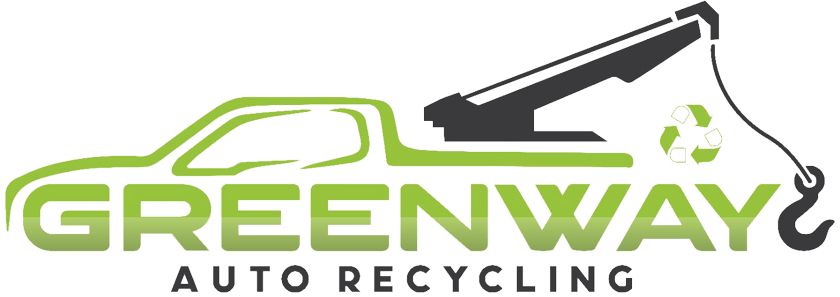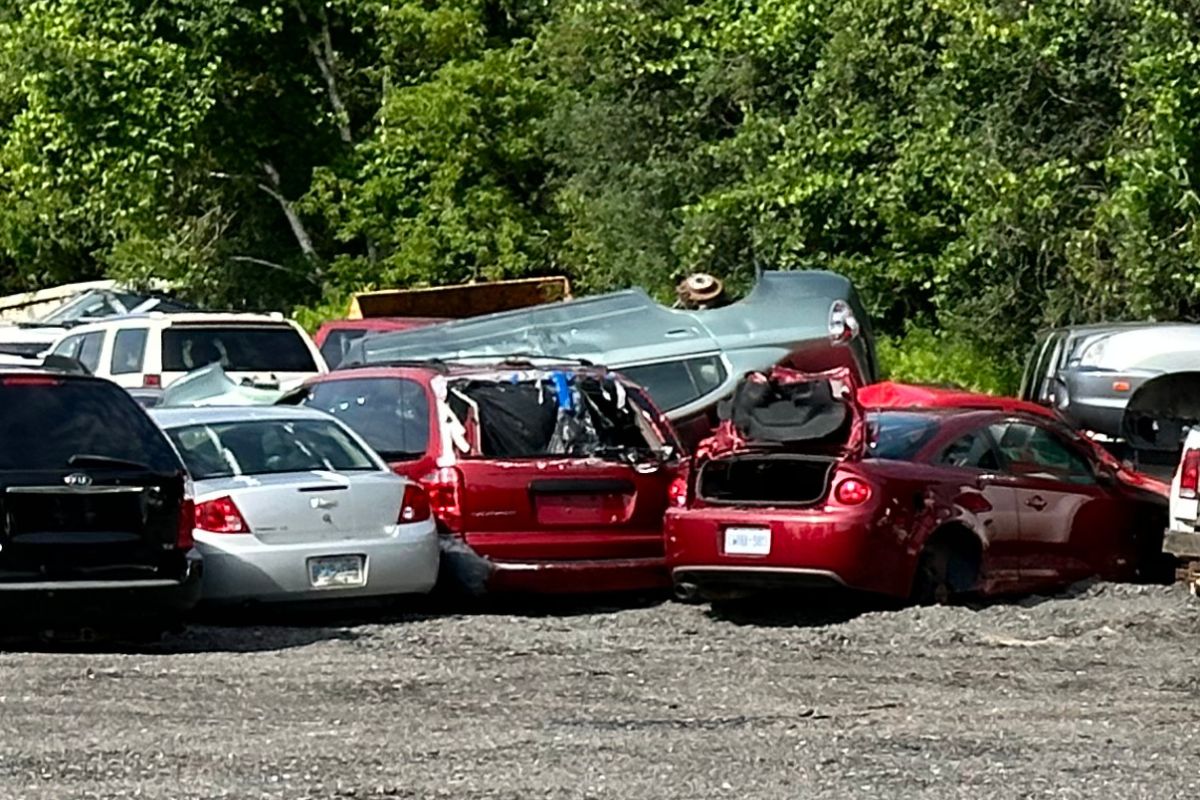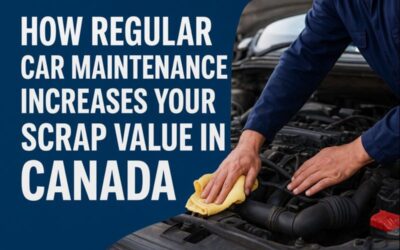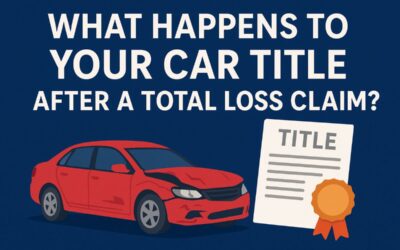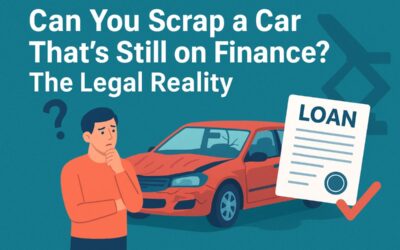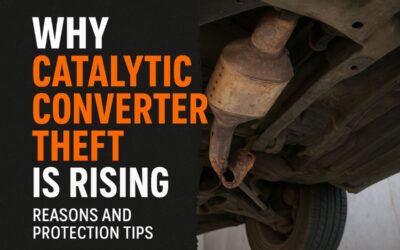Introduction
When a vehicle stops being useful, it becomes what the auto recycling industry calls an “End of Life Vehicle” or ELV. This term refers to cars, vans, and other vehicles that are no longer safe to drive or expensive to repair. You may still see these vehicles on someone’s driveway, stuck in a garage, or abandoned in parking lots. But keeping them around harms the environment and offers no benefit to you.
In Canada, especially in urban regions like the GTA, thousands of vehicles reach the end of their lifespan each year. Some break down due to wear and tear. Others get written off after accidents or fail emission tests. Either way, these cars are no longer practical to use. That’s where proper auto recycling comes in. Understanding what ELVs are helps you make smart, legal, and eco-friendly choices when it’s time to let go of your old ride.
What Is an End-of-Life Vehicle?
An End-of-Life Vehicle, or ELV, is a car that can no longer run safely or affordably. In most cases, it’s too damaged or too old to fix. Some cars reach this point after 15 or more years. Some reach it sooner due to crashes or major repairs that cost too much.
There are two types of ELVs. The first is a natural ELV, which means that cars reach their end due to age or wear. The second type is a premature ELV, which means that vehicles stop being useful early due to severe accidents, engine failure, or flood damage.
Once a car becomes an ELV, keeping it doesn’t help. It doesn’t drive well, it may not be safe, and fixing it usually costs more than the car is worth. At this point, the best move is to scrap it through a legal and licensed recycler.
Common Signs Your Car Has Reached the End
Not sure if your car has reached the end? Here are the clear telltale signs. If you are often stuck on the road or calling for a tow, that’s a red flag. If your car needs repairs every month or every few weeks, it’s no longer reliable.
When repair costs exceed what your car is worth, it’s time to stop spending. If it fails an emissions or safety test and the fix is costly, you might not be allowed to drive it at all. Some older cars don’t have airbags, ABS, or other basic safety features. That makes them risky for you and others.
Rust is another major warning. If you see it on the frame, under the car, or near the wheels, the structure may already be weak. If the resale value is low and no one wants to buy it, the car has likely reached its end. These signs mean it’s time to think about scrapping the car instead of sinking more money into it.
Also Read: Guide to Scrap Car Removal for Vintage and Classic Cars
What Happens After a Car Becomes an ELV?
Once a car is marked as an ELV, it doesn’t just sit in a junkyard. A proper recycler handles it step by step. First, the recycler removes the vehicle from your location. Then, they drain all fluids like oil, fuel, and coolant. These fluids must not end up in the ground or water.
After that, they remove parts that still work. This includes tires, batteries, mirrors, and engines. These can be reused or sold. Once the useful parts are out, the car’s body is crushed or shredded. The metal is then sorted by type and sent to be recycled.
Up to 95% of an ELV is recyclable by weight, including steel, aluminum, and copper. These materials are used again in new cars, appliances, or construction. This process saves resources and cuts down waste.
Why Does Proper Disposal Matter?
Old cars are not just metal. They contain toxic fluids, broken parts, and sharp edges. Leaving them sitting around creates serious problems. These fluids can leak into the soil or water and cause damage to plants, animals, and people.
Legal issues can also come up. In Ontario, you must transfer ownership and cancel registration when scrapping a car. If you skip these steps, you could still be held responsible for that vehicle.
Recycling a car also helps the environment and saves energy. It avoids the need to mine new metal. It reduces the number of parts ending up in landfills. Most of all, it supports a local industry that creates jobs and keeps communities clean. In places like the GTA, where space is limited and traffic is high, removing dead cars helps keep neighborhoods safer and cleaner.
What Do Canada’s Laws Say About ELVs?
In Canada, laws around End-of-Life vehicles exist to protect the public and the environment. There are national standards for how to handle these vehicles. They explain how to remove fluids, how to handle batteries, and what records must be kept.
In Ontario, the Environmental Protection Act guides what recyclers must do. If they don’t meet these rules, they face penalties. As a car owner, you also have duties. You must cancel your plates, tell the Ministry of Transportation (MOT), and legally transfer the car to the recycler. Recyclers must give you proof that they took your car. This could be a receipt or certificate of destruction.
It’s best to check that the company you use is licensed. If they offer to pay cash with no paperwork, ignore such auto recyclers. Avoid unlicensed or shady deals.
What to Do Before You Scrap a Car?
Before giving your car to a recycler, take a few smart steps. First, empty the car. Look inside the trunk, under the seats, and in the glove box. People often forget things like documents, tools, or sunglasses.
Next, cancel your car insurance. Tell your insurance company that the vehicle is being scrapped. Then, remove your license plates and take them to Service Ontario or the proper office in your area.
Get quotes from multiple car scrapyards or auto recyclers. Ask about their payout and whether they provide free pickup. Always get the offer and proof of pickup in writing.
Keep a record of the deal. If anything goes wrong, you’ll have proof that the vehicle is no longer yours.
Also Read: Scrapping Electric and Hybrid Cars: What Makes It Different?
Myths About End-of-Life Vehicles
Many people delay scrapping their car due to common myths. Some think they can still repair it. But if a car keeps breaking down or fails safety tests, it’s not worth more repairs.
Some believe they will get more money by selling it privately. But that rarely works if the car doesn’t run or looks bad. Buyers won’t take the risk.
Others worry that scrapyards won’t pay much. In truth, a good auto recycler pays fair rates based on weight and parts. If you think your car is worthless, you may be surprised by how much value is in the metal and working parts.
Finally, some think auto recyclers are all shady. That’s false. Licensed recyclers follow the law and offer clean, honest service. You just need to choose the right one.
Also Read: Top 10 Common Myths About Scrapping Your Car in Canada
How Much Money Can You Get for an ELV?
How much you’ll get for your ELV depends on its weight, condition, and what parts still work. Larger vehicles with more metal often bring in more money. Recyclers also check if any valuable parts still work.
Prices for scrap metal change based on market rates. In Ontario, rates usually range from $300 to $1000 for a full car. If your battery, tires, rims, or radio still work, the offer may go higher.
In the GTA, recyclers may pay more if demand is strong or if scrap metal prices rise. You can check current rates online or by calling a few companies. Just ensure the quote includes pickup, paperwork, and taxes, if any.
Why Work With a Professional Auto Recycler?
Using a licensed recycler keeps you safe from trouble. They follow the law, give you fair offers, and handle your car in the right way. You won’t face surprise fees or delays. You won’t have to worry about your old car ending up back on the road illegally.
Professional recyclers will tow your car, process it properly, and give you clear proof that it’s been scrapped. This clears your name from any future issues tied to that vehicle. It also gives you peace of mind.
Let Greenway Auto Wreckers Handle Your ELV
If your car has reached the end of its life, Greenway Auto Recycling can help. We offer scrap car removal services across the Greater Toronto Area. Our team handles the full process from pickup to paperwork.
Plus, we pay fair prices based on real-time scrap metal rates. We tow your vehicle at no cost and follow all rules for safe, legal recycling. You won’t deal with hidden charges or shady offers.
Thousands of drivers in the GTA trust our scrapyard because they get the job done fast, clean, and properly. Call us at (416) 783-9026 to schedule a pickup and free up your space the right way.
